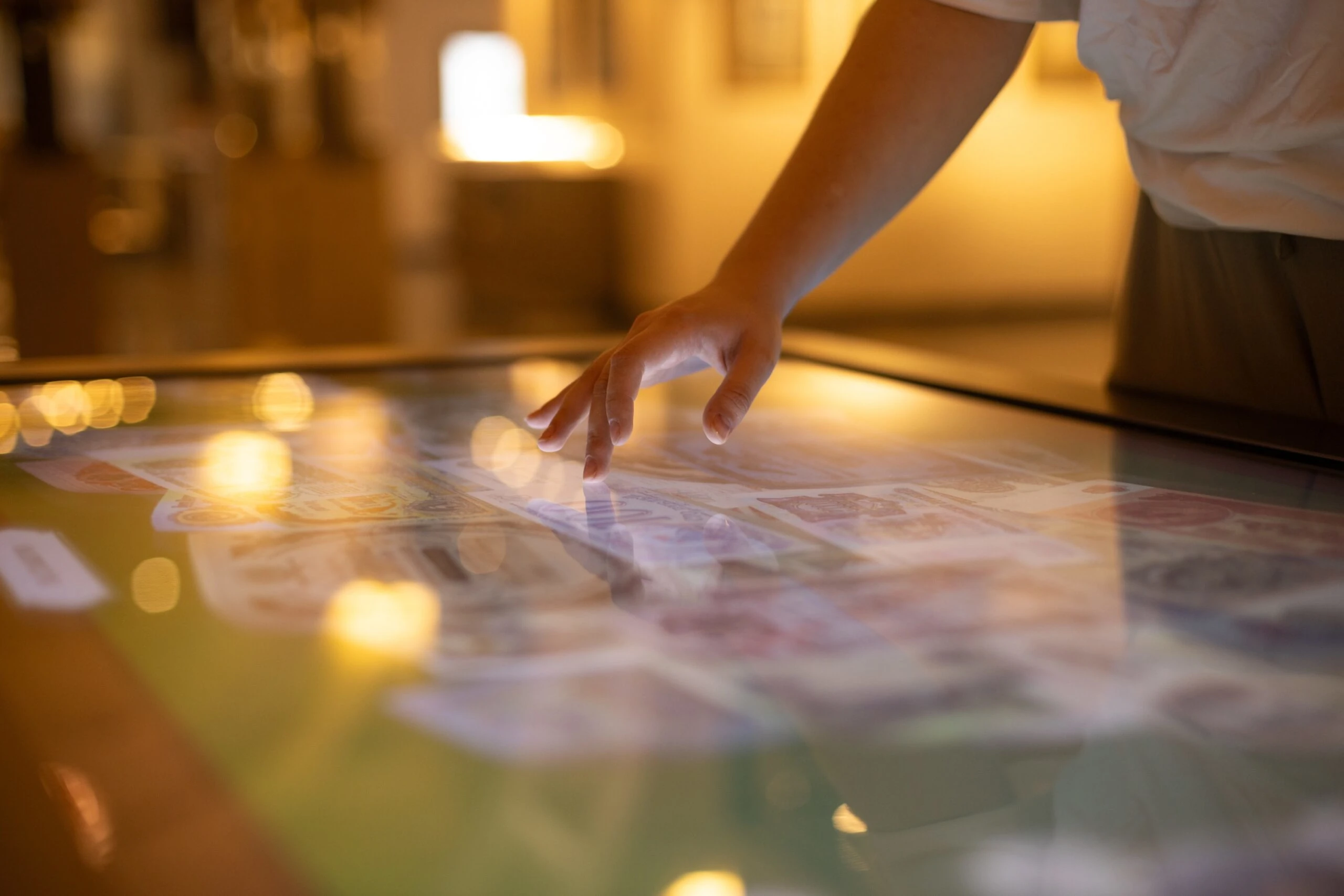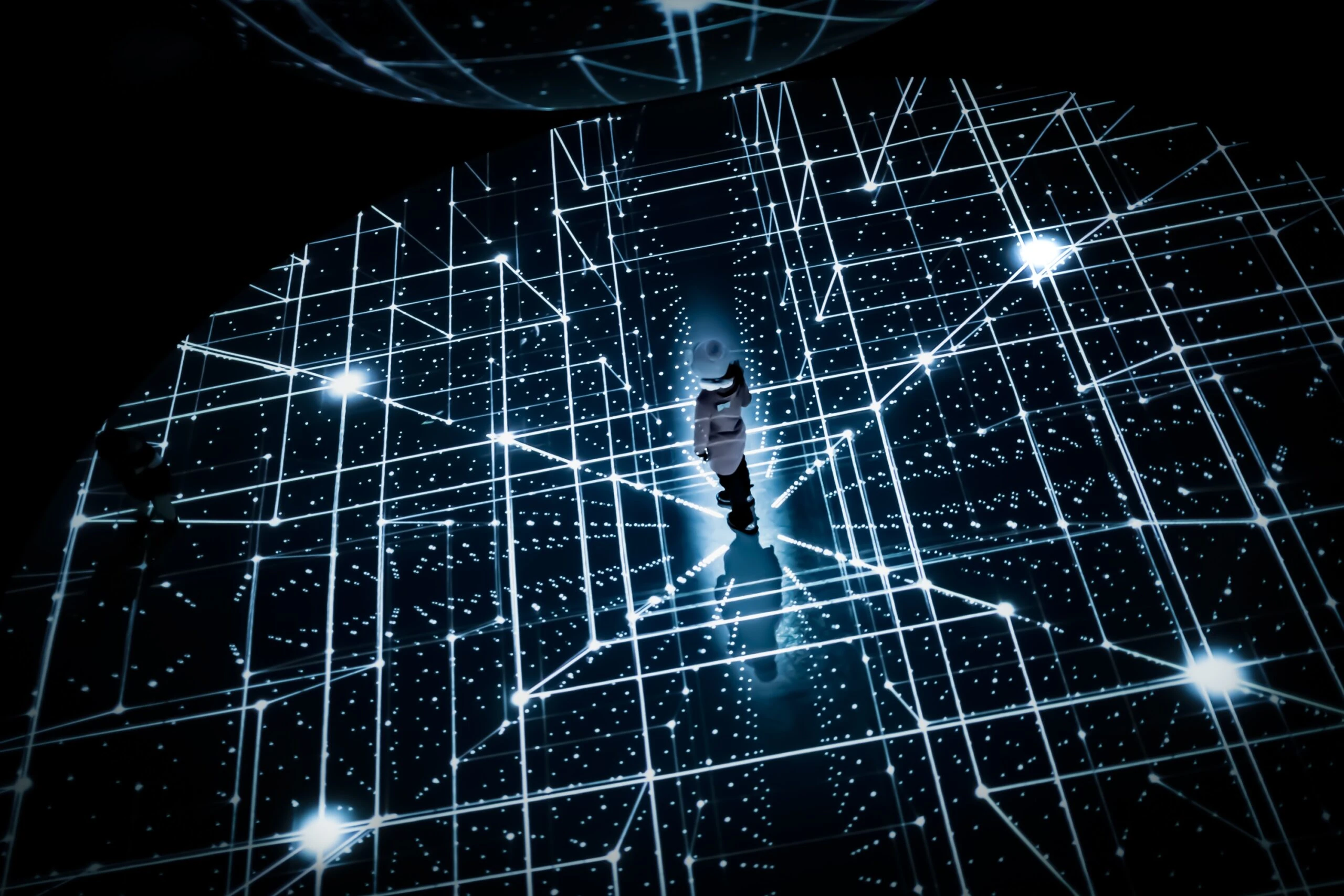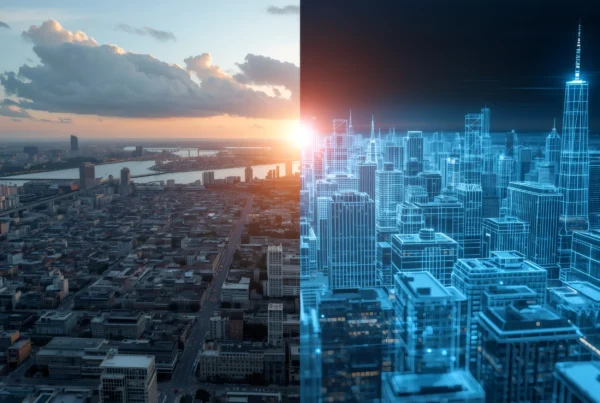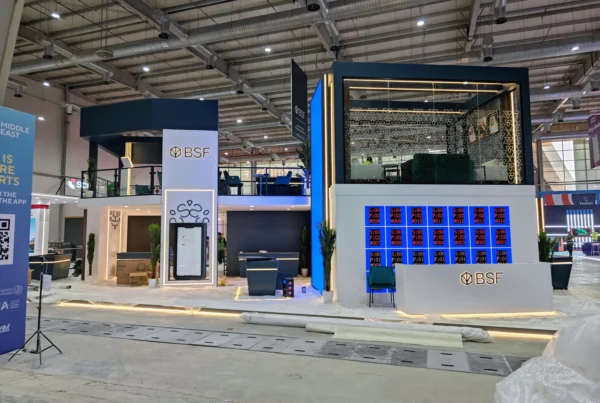Real estate exhibits, corporate showrooms, and brand events have all entered a new phase of engagement—one defined by technology-driven, user-focused design. But terms like “interactive,” “immersive,” and “experiential” are often used interchangeably, leading to confusion about how each approach can help organizations stand out. This article clarifies the distinctions among these three ideas, illustrating how each concept transforms buyer or visitor experiences in unique ways. We’ll delve into the tech frameworks involved—such as digital twin solutions—and discuss how occupant analytics and user-centric strategies shape everything from property expos to high-profile brand events.

1. Understanding the New Landscape of Engagement
1.1 The Rise of User-Directed Experiences
Whether you’re marketing an off-plan condominium, launching a new automotive model, or promoting a cultural exhibit, the days of one-way presentations and static displays are numbered. Modern audiences crave interactive content that responds to user input, immersive encounters that blur the boundary between real and digital worlds, and experiential events that spark emotional connections. From real estate developers trying to shorten sales cycles to event planners seeking an unforgettable brand moment, these strategies cater to evolving consumer expectations.
1.2 Why Terminology Matters
Defining each approach sets a clear path for planning and execution:
-
Interactive typically focuses on immediate user input and response cycles.
-
Immersive aims at deeper sensory or spatial involvement, often using VR/AR environments.
-
Experiential orchestrates broader event-like journeys that blend emotion, brand narratives, and user empowerment.
For professionals setting up advanced marketing channels, understanding these nuances ensures that the chosen concept aligns with brand goals, budget realities, and occupant analytics data.
2. Interactive Solutions: Real-Time Feedback and Participation
2.1 Defining Interactive Experiences
An interactive solution invites immediate user involvement. At a minimum, it might be a touchscreen kiosk or occupant analytics-driven booth. At the higher end, interactive solutions can incorporate gesture controls, occupant tracking cameras, or advanced sensors that record how visitors explore content.
Key traits of interactive setups:
-
Direct User Input: People influence the environment—e.g., toggling finishing options in real estate or customizing a product’s color in automotive showrooms.
-
Immediate System Response: Changing variables triggers real-time updates on display screens, occupant analytics dashboards, or AR overlays.
-
Two-Way Communication: Data flows from visitor actions into occupant analytics, which in turn refines or personalizes subsequent interactions.
2.2 Practical Examples
In property marketing, a developer might place an interactive kiosk showing multiple apartment layouts. Visitors tap on finishing materials, watch how occupant flow might work, and see updated cost estimates on the fly. For deeper guidance on user-focused engagement, see our piece on user-centric strategies to ensure intuitive flows and high visitor satisfaction.

3. Immersive Solutions: Deep Sensory and Emotional Engagement
3.1 Defining Immersive Experiences
Immersive solutions strive for sensory absorption, making the participant feel they’re part of a different reality or storyline. VR headsets, 360° visuals, or digital twin environments all create a heightened sense of presence. In real estate, that might mean “walking through” an off-plan unit in VR and feeling the scale and atmosphere of future rooms; for an automotive brand, it might mean “test driving” a new model in a VR environment simulating city streets.
Key traits of immersive setups:
-
High-Intensity Focus: Eliminates external distractions, drawing the viewer into a cohesive environment.
-
Multi-Sensory Input: Could include visuals, soundscapes, haptic feedback, or occupant analytics that shift environment details in real time.
-
Spatial Realism: Immersive solutions often replicate actual proportions, occupant flows, or day/night cycles for an authentic impression.
3.2 Real-World Applications
From VR real estate tours to occupant analytics that simulate crowd movement in a new mall design, immersive experiences let prospective buyers or event attendees “live” the environment before it’s built. For instance, using a digital twin approach in a showroom helps visitors toggle building features or occupant flow scenarios. This synergy is akin to strategies found in our smart interactive solutions, merging occupant analytics with immersive displays to produce more vivid brand connections.

4. Experiential Solutions: Crafting Full-Scale Brand Events
4.1 Defining Experiential Engagement
“Experiential” typically references an overarching, event-like concept that sparks emotional ties and a sense of storytelling. Rather than focusing solely on immediate interactivity or VR immersion, experiential solutions orchestrate the entire visitor journey—blending user-centric design, occupant analytics, and brand narratives into a cohesive environment.
Key traits of experiential setups:
-
Holistic Environment: Merges digital, physical, and sometimes cultural or thematic elements for a multi-layered brand experience.
-
Emotional Resonance: Encourages guests to form lasting memories, often driving them to share on social media or discuss the event afterwards.
-
Event-Like Structure: May include staff interactions, occupant analytics–driven micro-events, or scheduled reveals, which add a live, festive feel.
4.2 Example Use Cases
Think of a developer unveiling an off-plan project not just by showing VR visuals, but by hosting a curated brand event complete with occupant analytics-based personalization, local cultural elements, and real-time AR demonstrations. We explore this approach more fully in our article on why experiential marketing resonates with Gulf audiences, though its principles translate well anywhere brand loyalty is paramount.

5. Interactive vs. Immersive vs. Experiential: A Comparison
5.1 Core Distinctions
| Dimension | Interactive | Immersive | Experiential |
|---|---|---|---|
| Focus | User input & immediate feedback | Deep sensory engagement, realism | Holistic event with emotional narrative |
| Tech Examples | Touchscreens, occupant analytics dashboards | VR headsets, AR overlays, digital twin visuals | Integrated events: multi-sensory + brand storytelling |
| User Involvement | Medium: direct response to user actions | High: enveloping environment | Variable: curated brand experiences & occupant data |
| Outcome | Quick demonstrations, targeted user data | Transporting viewers for strong presence | Lasting emotional tie, large-scale brand immersion |
5.2 Picking the Right Approach
A developer aiming for stronger off-plan sales might rely heavily on immersive or interactive modules (like occupant analytics–powered VR). If the objective is to create a broader brand event with a strong emotional arc—like a multi-day show connecting multiple property lines—experiential might make more sense. Often, these categories overlap; for instance, an experiential real estate expo can incorporate both immersive VR and occupant analytics–driven interactive demos.
6. Implementation in Real Estate: A Closer Look
6.1 Off-Plan Property Marketing
Off-plan marketing typically merges “interactive” and “immersive” solutions. Visitors manipulate finishing choices (interactive) within a VR environment replicating future room proportions (immersive). The occupant analytics gleaned can shape follow-up calls or tailored promotions. We outline how occupant data shortens time to purchase in digital twin solutions for property marketing.
6.2 Showroom Experiences
A real estate brand might host an on-site showroom with occupant analytics that track each visitor’s dwell time at particular floor plan stations. Meanwhile, an “immersive corner” might seat them in a VR lounge, letting them “walk” the property. Once the brand orchestrates an event-based unveiling—like a cultural-inflected brand night—this becomes experiential, bridging occupant analytics, immersive technology, and user-focused staging.
7. Case Study: Fusing Approaches for Greater Impact
7.1 From Static to Immersive—An Example
Consider a local developer unveiling a new multi-tower complex. Initially reliant on brochures, they integrate occupant analytics and a VR station:
-
Interactive: Occupant-tracking kiosk: visitors pick finishing materials, occupant analytics logs choices.
-
Immersive: A VR demonstration replicates future rooftop amenities.
-
Experiential: The brand event includes occupant data–based personalization: returning visitors get updated VR scenarios or cultural references.
This synergy echoes the tactics in building interactive success in Saudi Arabia—but easily applies to broader real estate contexts beyond the Gulf.
7.2 Beyond Real Estate
While real estate developers often adopt these methods, they also appear in museums, tourist sites, automotive showrooms, or corporate brand events. The interplay remains the same: occupant analytics shape user flows, digital twin or VR fosters immersion, and the larger brand event invests the experience with a sense of story.
8. Key Steps for Implementing the Right Method
8.1 Clarify Your Goals
-
Immediate Buyer Feedback: If you want direct user input about design finishes, aim for “interactive.”
-
Deep Emotional Transport: If you want visitors to feel “inside” the environment, you need “immersive” solutions like VR or occupant analytics tracking occupant flow.
-
Holistic Brand Event: If you want to orchestrate an overall emotional narrative, go “experiential.”
8.2 Match Technology to Budget and Scale
Large-scale “experiential” solutions might need occupant analytics, digital twin stations, staff training, and a multi-day event structure—like an expo. Meanwhile, “interactive” could be as simple as installing occupant analytics–enabled kiosks or AR overlays in existing showrooms. For cost-friendly expansions, see how we advise scaled rollouts in scaling up your strategy.
8.3 Harness AI for Personalization
Whether aiming for interactive, immersive, or experiential approaches, occupant analytics plus AI can personalize content in real time. If occupant data reveals someone’s interest in balcony expansions, the digital environment (immersive or interactive) can highlight available units with extended balconies. For more advanced occupant data usage, see AI takes center stage.
9. Challenges and Best Practices
9.1 Balancing Tech and Cultural Sensitivity
If your brand is operating in culturally nuanced markets (like the GCC), ensure occupant analytics or VR demos align with local traditions—e.g., separate spaces for families, appropriate staff attire, or modest occupant analytics dashboards. Thoughtful design helps avoid overshadowing user comfort with technology hype.
9.2 Maintaining Fresh Content
Interactive or immersive exhibits can lose their appeal if not regularly updated. Occupant analytics can pinpoint which features remain popular, letting you refresh or rotate scenarios. This approach echoes the principle of living showrooms—always adjusting to occupant feedback.
9.3 Skilled Technical Teams
Immersive VR or occupant analytics–enabled solutions need specialized talent: 3D artists, software developers, occupant data experts. Many real estate teams turn to specialized consultancies, like those offering smart interactive solutions, ensuring that occupant analytics, user-centric design, and brand identity mesh seamlessly.
10. Conclusion & Next Steps
Interactive, immersive, and experiential solutions each address different aspects of user engagement:
-
Interactive focuses on real-time user input and immediate system responses—such as occupant analytics dashboards or AR overlays.
-
Immersive emphasizes sensory or spatial depth—often with VR/AR or digital twin realism.
-
Experiential orchestrates a broader emotional or event-like narrative, layering occupant analytics, high-tech visuals, and brand story into a cohesive environment.
Real estate developers can unify these approaches to create powerful interactive exhibitions that engage buyer emotions, enable occupant-driven customization, and produce occupant analytics for future optimizations. By aligning each solution type with your strategic objectives—be it accelerating off-plan deals or hosting an impactful brand event—you’ll reshape how prospects experience and commit to your properties.
If you’re looking to adopt occupant analytics, digital twin frameworks, or advanced user-centric designs, our team is here to help. Feel free to contact us for specialized insights. And for deeper reading on bridging local culture or advanced occupant flows, see how we’ve discussed building interactive success in Saudi Arabia. By integrating the right combination of interactive, immersive, and experiential tactics, real estate developers and event planners can evolve beyond passive displays, captivating buyers in the new era of property showcasing.
FAQ: Interactive, Immersive, and Experiential Solutions
1. How does “interactive” differ from “immersive” when it comes to real estate marketing?
Interactive solutions center on user input and immediate system response—like touchscreens or occupant analytics kiosks—while immersive experiences aim for deeper sensory engagement, often involving VR, AR, or digital twin technology. In real estate, an interactive setup might let you swap finishes on a display, whereas an immersive solution could offer a VR walk-through of an off-plan condominium.
2. What exactly is an “experiential” environment, and how does it go beyond just being immersive?
Experiential settings involve crafting a complete event-like narrative that blends technology, design, and emotional storytelling. An experiential real estate expo could include interactive displays, occupant analytics-driven personalization, and live demonstrations, all orchestrated to leave visitors with a lasting emotional bond—beyond just trying out a VR headset.
3. Can we combine interactive, immersive, and experiential approaches in one exhibition?
Absolutely. Many developers merge interactive kiosks (e.g., occupant analytics dashboards) with immersive VR or AR demos in an experiential environment that feels like a themed brand event. This holistic setup caters to different visitor preferences, delivers memorable experiences, and drives stronger off-plan sales.
4. How do occupant analytics enhance these three approaches?
Occupant analytics collect real-time feedback, capturing user choices or dwell times at specific exhibits. By understanding which layouts or features resonate most, developers can refine future marketing strategies, tailor follow-ups, and continuously update content—whether in an interactive kiosk, immersive VR scene, or larger experiential event.
5. What’s the first step if we want to adopt one of these solutions for our property showcase?
Clarify your goal—do you need immediate buyer input (interactive), a VR-based walk-through (immersive), or a broader event narrative (experiential)? From there, start small (like a single immersive corner) or seek guidance from specialized teams, like those offering digital twin solutions, occupant analytics integrations, or smart interactive solutions to scale effectively.


